Vibrant Spring Vegetable Stir-Fry Recipe: Fresh & Zippy Flavors
Vibrant and crisp spring vegetables dance through this incredible stir-fry, creating a symphony of flavors and textures.
Seasonal produce takes center stage in this quick and simple dish.
Fresh ingredients burst with natural sweetness and bright colors.
Chopped asparagus, tender snap peas, and delicate carrots combine into a delightful medley.
You’ll love how quickly this meal comes together in just minutes.
Minimal preparation ensures maximum enjoyment for anyone seeking a nutritious and delicious meal.
Each bite promises a delectable journey through spring most delightful harvest.
What Makes Spring Vegetable Stir-Fry So Fresh
Ingredients for Spring Vegetable Stir-Fry
Vegetables:Aromatics:Seasonings and Oils:How to Cook Spring Vegetable Stir-Fry
Step 1: Prepare Colorful Vegetables
Clean and slice asparagus, bell peppers, and carrots into bite-sized pieces. Make sure to cut them at an angle for a professional chef-like presentation.
The diagonal cuts help vegetables cook evenly and look more appetizing.
Step 2: Warm the Cooking Surface
Place a large skillet or wok on the stove and pour in cooking oil.
Turn the heat to medium-high and allow the oil to become hot and slightly shimmery. The right temperature ensures your vegetables will sizzle and cook quickly.
Step 3: Awaken Garlic Flavors
Toss minced garlic into the hot oil. Stir rapidly for about 30 seconds until the garlic releases its aromatic fragrance.
Be careful not to burn the garlic, as it can turn bitter.
Step 4: Introduce Hearty Vegetables
Add carrots and asparagus to the skillet.
Continuously move them around with a wooden spoon or spatula for 3-4 minutes. The vegetables should start to soften but maintain a slight crunch.
Step 5: Layer in Crisp Companions
Slide bell peppers and snap peas into the skillet. Continue stirring and cooking for another 4 minutes.
The vegetables should look bright and vibrant, signaling they are perfectly cooked.
Step 6: Enhance with Savory Seasonings
Drizzle these delightful ingredients:Stir everything together to ensure each vegetable is coated with the flavorful mixture.
Serve immediately and enjoy your colorful, nutritious stir-fry.
Tips for Spring Vegetable Stir-Fry
Variations for Spring Vegetable Stir-Fry
Best Pairings for Spring Vegetable Stir-Fry
Light, zesty white wine complements the fresh vegetable flavors and cuts through the soy sauce’s richness.
Fluffy, fragrant rice provides a perfect neutral base that absorbs the stir-fry’s delicious sauce and adds subtle texture.
Sprinkle crunchy, nutty seeds on top to enhance the dish’s complexity and add a delightful textural contrast.
Cool, refreshing side dish balances the stir-fry’s warm spices and offers a clean, crisp palate cleanser.
Storage Advice for Spring Vegetable Stir-Fry
FAQs
Choose fresh, crisp vegetables like asparagus, bell peppers, carrots, and snap peas. These provide great texture and flavor, ensuring a colorful and nutritious dish.
A large skillet or wok is ideal. You’ll want a pan that conducts heat evenly and allows vegetables to cook quickly without becoming mushy.
Add tofu, chicken, shrimp, or beef during the cooking process. Cut protein into small pieces and stir-fry with vegetables for a complete meal.
Yes, control heat by increasing or decreasing red pepper flakes. Start with a small amount and add more to suit your taste preferences.
Print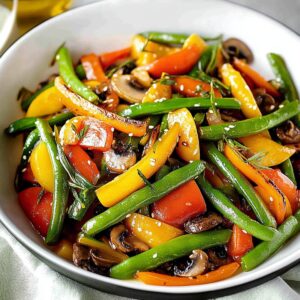
Spring Vegetable Stir-Fry Recipe
- Total Time: 25 minutes
- Yield: 4 1x
Description
Crisp spring vegetables dance in a wok of zesty spring vegetable stir-fry, creating a symphony of fresh flavors and textures. Hungry cooks can quickly elevate weeknight dinners with this simple, nutritious Asian-inspired dish that promises to delight your palate.
Ingredients
Main Vegetables:
- 1 bunch asparagus
- 1 cup bell peppers (mixed colors)
- 1 cup snap peas
- 1 medium carrot
Aromatics and Seasonings:
- 3 cloves garlic
- 2 tablespoons low-sodium soy sauce
- 1 tablespoon sesame oil
Spices:
- 1/4 teaspoon red pepper flakes
Instructions
- Thoroughly rinse all vegetables under cool water, ensuring they are clean and free from dirt or debris.
- Slice asparagus into diagonal pieces, chop bell peppers into uniform strips, and julienne carrots for consistent cooking.
- Warm cooking oil in a spacious skillet over medium-high heat until the surface becomes glossy and slightly rippling.
- Add finely chopped garlic to the hot oil, stirring quickly for approximately 30 seconds to release aromatic flavors without burning.
- Introduce carrots and asparagus to the skillet, tossing rapidly for 3-4 minutes until they begin to soften but maintain a crisp texture.
- Carefully fold in bell peppers and snap peas, continuing to stir-fry for an additional 4 minutes until vegetables appear bright and vibrant.
- Enhance the flavor profile by drizzling soy sauce, sesame oil, and sprinkling red pepper flakes across the vegetables, gently stirring to ensure even distribution.
- Remove from heat immediately to prevent overcooking and preserve the vegetables’ natural crunch and nutritional integrity.
- Transfer to a serving platter, allowing the residual heat to meld the flavors for a few moments before serving.
Notes
- Prep Vegetables Ahead: Chop all vegetables uniformly to ensure even cooking and professional-looking presentation.
- Maintain High Heat: Keep skillet temperature consistent for crisp-tender vegetables with beautiful caramelization and vibrant colors.
- Customize Spice Levels: Adjust red pepper flakes to match personal heat preferences, making the dish adaptable for different taste buds.
- Quick Protein Boost: Optional protein additions like tofu, chicken, or shrimp can transform this side dish into a complete meal for varied dietary needs.
- Prep Time: 15 minutes
- Cook Time: 10 minutes
- Category: Lunch, Dinner, Appetizer, Snacks
- Method: Sautéing
- Cuisine: Chinese
Nutrition
- Serving Size: 4
- Calories: 90 kcal
- Sugar: 5 g
- Sodium: 350 mg
- Fat: 7 g
- Saturated Fat: 1 g
- Unsaturated Fat: 6 g
- Trans Fat: 0 g
- Carbohydrates: 8 g
- Fiber: 3 g
- Protein: 3 g
- Cholesterol: 0 mg

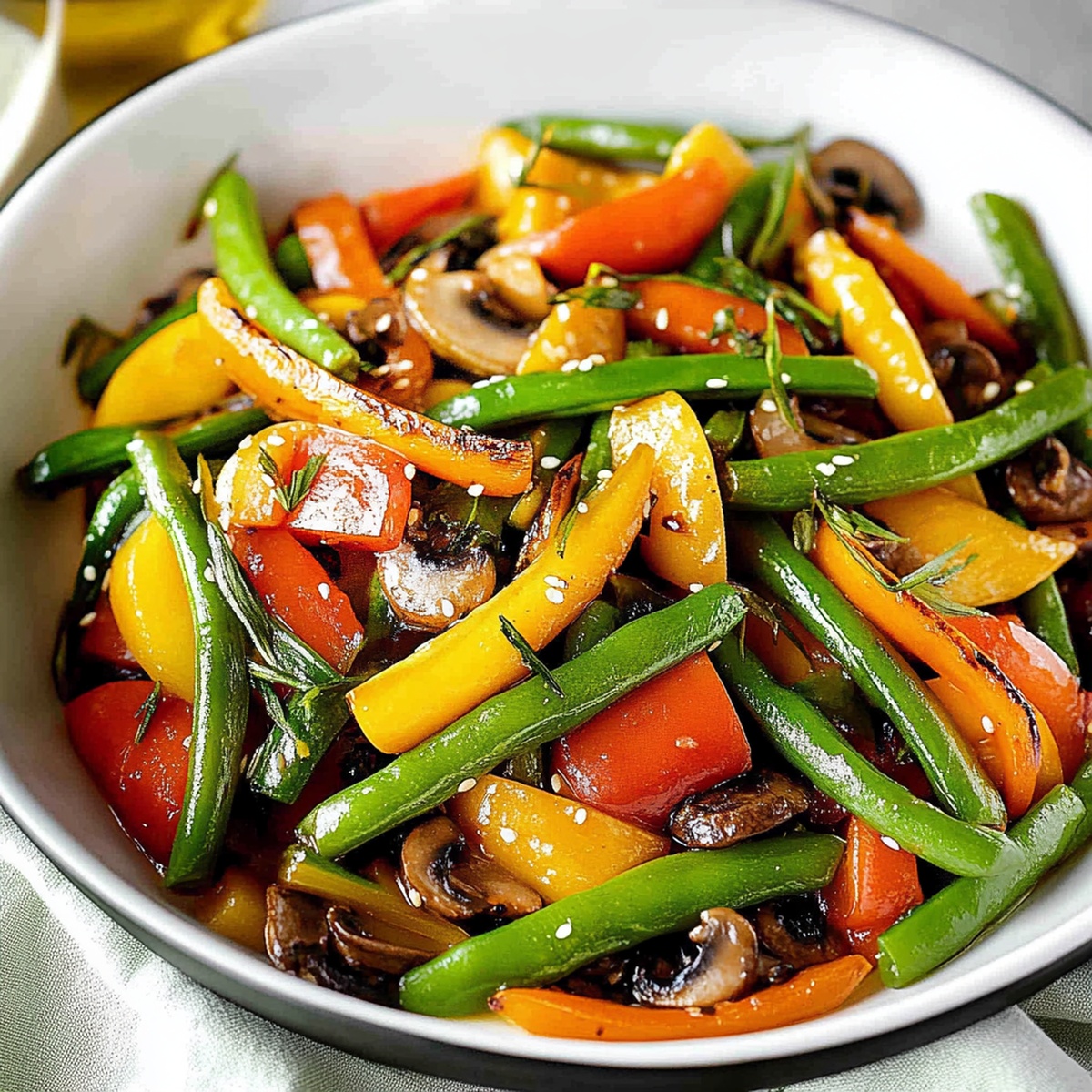
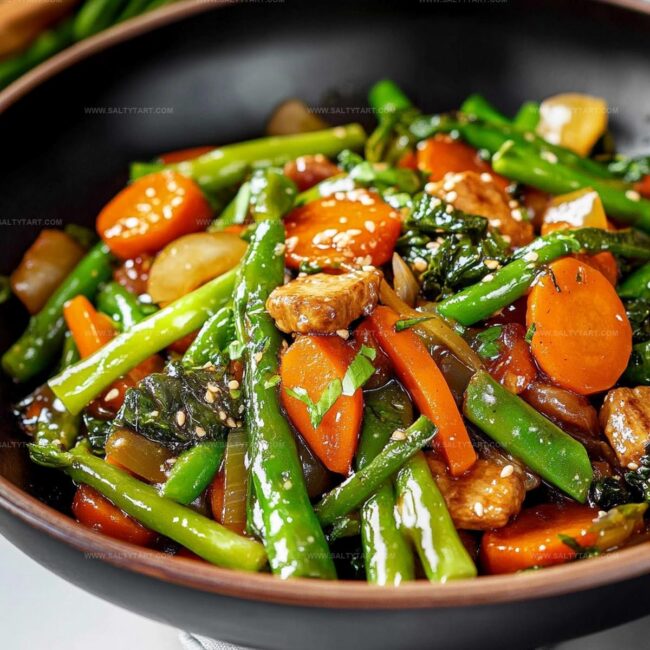

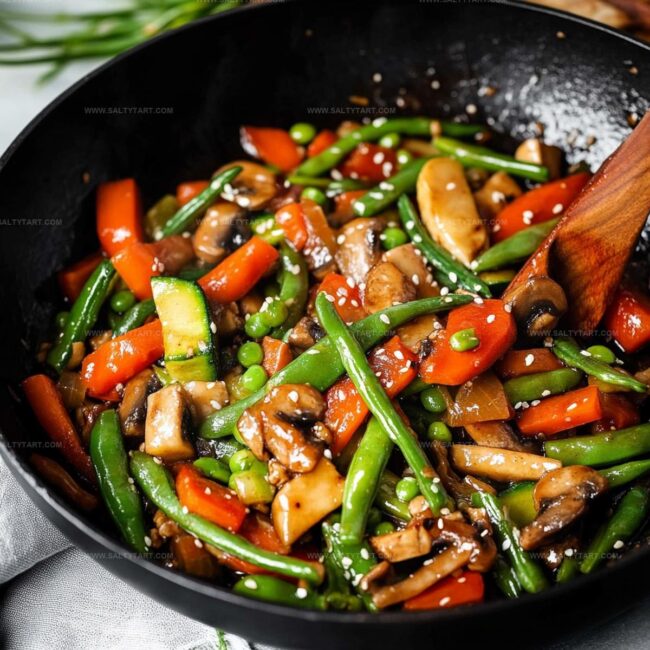
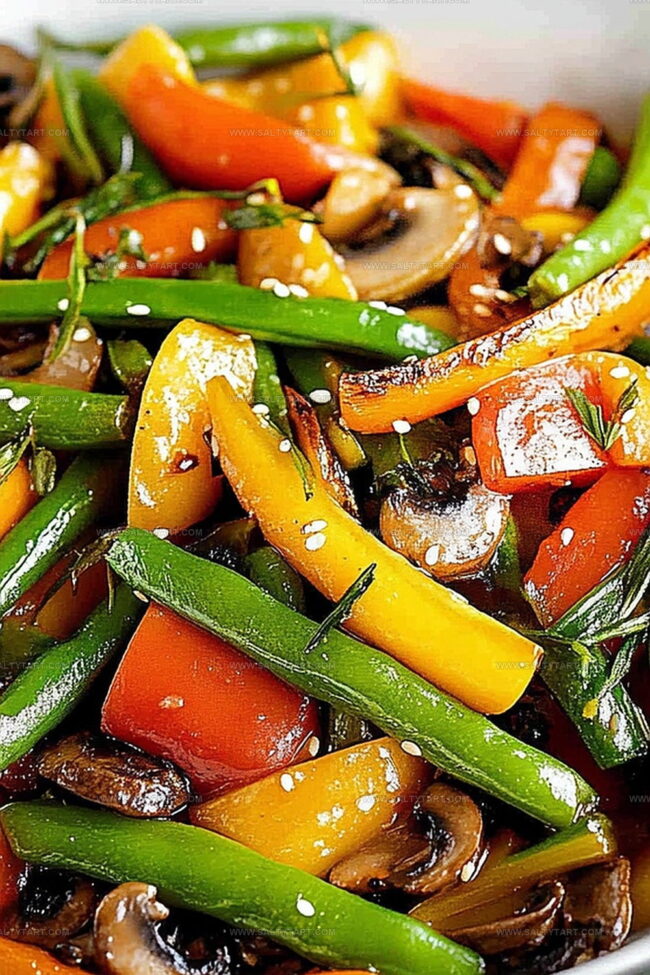
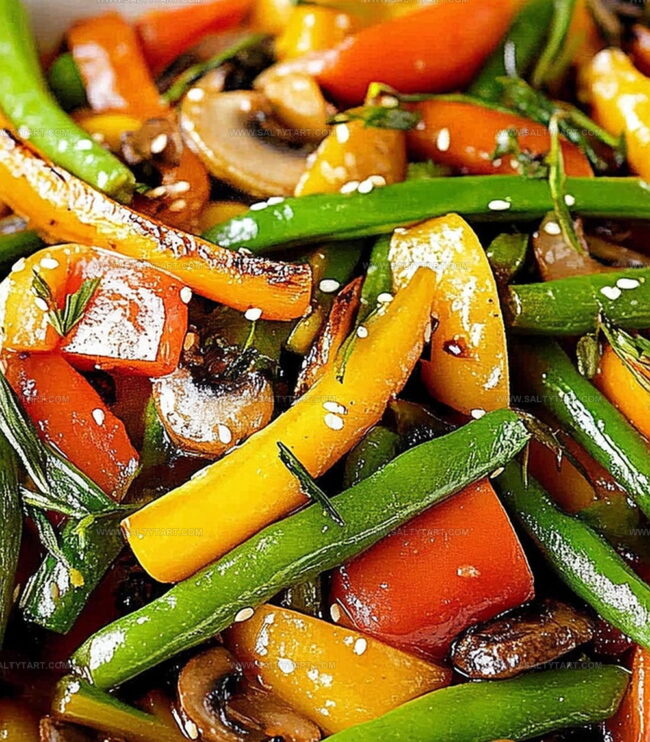
Mike Reynolds
Founder & Recipe Developer
Expertise
Farm-to-table cuisine, Seasonal recipe development, Sustainable cooking techniques, Food photography
Education
Asheville-Buncombe Technical Community College (A-B Tech)
Associate Degree in Culinary Arts
Mike studied culinary arts with a strong focus on farm-to-table principles and sustainable cooking. His training emphasized the importance of fresh, local ingredients and environmentally responsible practices in the kitchen.
Mike’s food journey began deep in the Blue Ridge Mountains, where weekends at farmers’ markets and home-cooked meals sparked a lifelong obsession with simple, seasonal eating.
After earning his Associate Degree in Culinary Arts from Asheville-Buncombe Technical Community College, he set out to bring farm-to-table cooking into everyday kitchens, without the fuss.
Mike’s philosophy is all about keeping it fresh, unfussy, and full of heart. When he’s not crafting new single-serving recipes, he’s hiking mountain trails, chatting with local farmers, or experimenting with wild ingredients in his backyard kitchen.